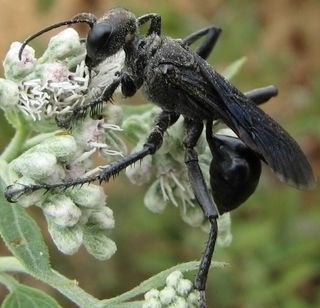
© Edward Trammel · 9
Prionyx atratus |
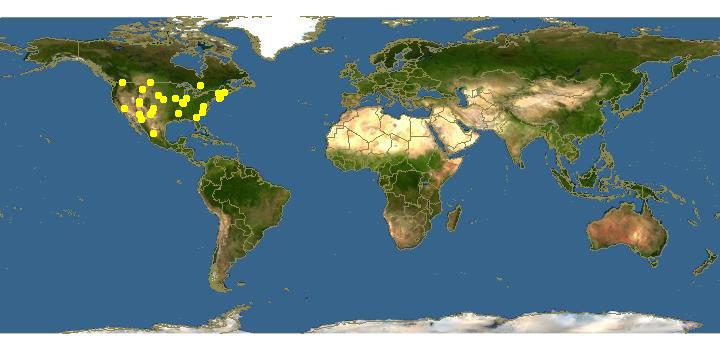
Click on map for details about points.
|
80x5 -
240x3 -
240x4 -
320x1 -
320x2 -
320x3 -
640x1 -
640x2
Set display option above.
Click on
images to enlarge. |
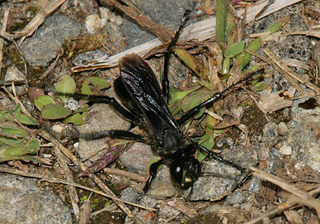
© Steve Nanz · 9
Prionyx atratus |
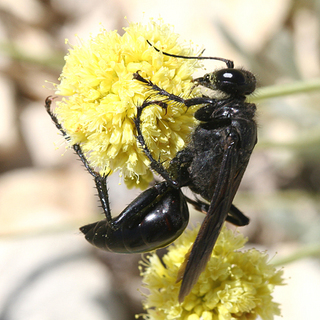
© Tom Murray · 9
Prionyx atratus |
|
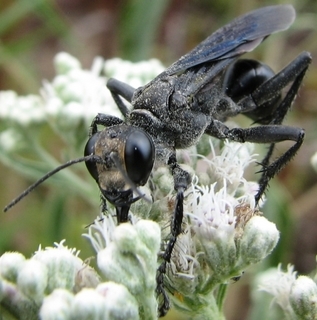
© Edward Trammel · 9
Prionyx atratus, head |
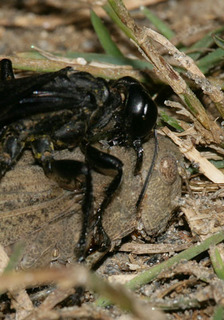
© Steve Nanz · 9
Prionyx atratus, head |
|
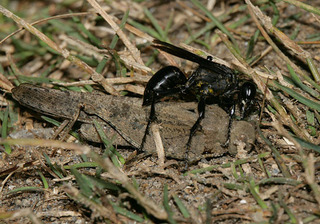
© Steve Nanz · 9
Prionyx atratus, side |
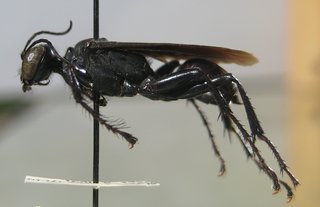
Native Bee Inventory and Monitoring Lab; Photographer: Erika Tucker · 1
Prionyx atratus, side |
|
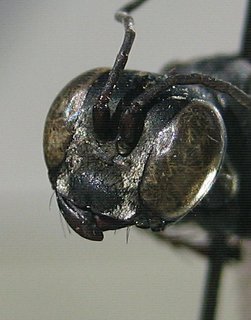
Native Bee Inventory and Monitoring Lab; Photographer: Erika Tucker · 1
Prionyx atratus, face |
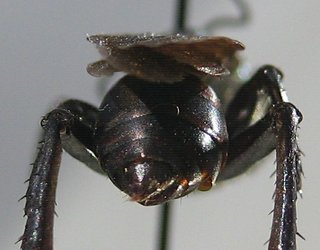
Native Bee Inventory and Monitoring Lab; Photographer: Erika Tucker · 1
Prionyx atratus, abdomen |
|
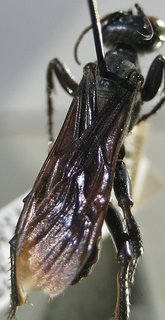
Native Bee Inventory and Monitoring Lab; Photographer: Erika Tucker · 1
Prionyx atratus, top |
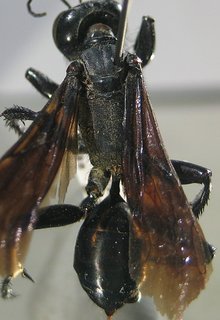
Native Bee Inventory and Monitoring Lab; Photographer: Erika Tucker · 1
Prionyx atratus |
|
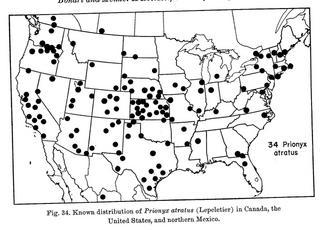
Bohart, R.M., Menke, A.S. 1963 · 0
Prionyx atratus, map |
|
Overview |
Taken from:
Bohart, R.M., Menke, A.S. 1963. A Reclassification of the Sphecinae: With a Revision of the Nearctic Species of the Tribes Sceliphronini and Sphecini.
Male.—Average length 12 mm; head, thorax, and gaster black; wings dark; erect hair of head and thorax black; face with some appressed silvery pubescence; flagellum with fossulae about as in figure 102 (see Parker, 1960, fig. 4); scutum dull, individual punctures obscured by shagreening; scutellum slightly raised but dull; sternite VII entire; genitalia illustrated in Parker, 1960, figure 14.
Female.—Average length 15 mm; face with extensive appressed silvery pubescence.
|
|
|
Names | |
Prionyx atratus (Lepeletier)
(Fig. 34)
Sphex labrosa Harris, 1835, in Hitchcock, Rpt. Geol. Mm. Rot Zool. Mass., p. 588. Nomen nudum. Sphex atrata Lepeletier, 1845, Hist. Nat. Insect., Hymen., 3:355. Lectotype ♀, “sans Patrie” (TURIN). Present designation.
Priononyx brunnipes Cresson, 1872, Trans. Amer. Ent. Soc., 4:213. Holotype ♂, Texas (USNM).
|
|
|
Geographic distribution | |
Distribution.—T his species is the most abundant black Prionyx in the United States and northern Mexico. To the north it ranges into southern Canada (fig. 34).
|
|
|
Natural history | |
There are two female syntypes in Turin labeled atrata but without locality data. We are designating one as lectotype. The other all-black Nearctic species, subatratus, has different flagellar fossulae and a more strongly raised scutellum.
Biology.—Evans (1958) listed the prey recorded for this species (Acridinae, Oedipodinae, Cyrtacanthacridinae). Rau and Ran (1916) and Rau (1938) observed males and females of at rat us in gregarious slumber on plants.
|
|
| Supported by | |
Updated: 2024-05-04 19:03:16 gmt
|